
Calculus For Dummies, 2nd Edition
Published by: John Wiley & Sons, Inc., 111 River Street, Hoboken, NJ 07030-5774, www.wiley.com
Copyright 2014 by John Wiley & Sons, Inc., Hoboken, New Jersey
Published simultaneously in Canada
No part of this publication may be reproduced, stored in a retrieval system or transmitted in any form or by any means, electronic, mechanical, photocopying, recording, scanning or otherwise, except as permitted under Sections 107 or 108 of the 1976 United States Copyright Act, without the prior written permission of the Publisher. Requests to the Publisher for permission should be addressed to the Permissions Department, John Wiley & Sons, Inc., 111 River Street, Hoboken, NJ 07030, (201) 748-6011, fax (201) 748-6008, or online at http://www.wiley.com/go/permissions .
Trademarks: Wiley, For Dummies, the Dummies Man logo, Dummies.com, Making Everything Easier, and related trade dress are trademarks or registered trademarks of John Wiley & Sons, Inc., and may not be used without written permission. All other trademarks are the property of their respective owners. John Wiley & Sons, Inc., is not associated with any product or vendor mentioned in this book.
LIMIT OF LIABILITY/DISCLAIMER OF WARRANTY : WHILE THE PUBLISHER AND AUTHOR HAVE USED THEIR BEST EFFORTS IN PREPARING THIS BOOK, THEY MAKE NO REPRESENTATIONS OR WARRANTIES WITH RESPECT TO THE ACCURACY OR COMPLETENESS OF THE CONTENTS OF THIS BOOK AND SPECIFICALLY DISCLAIM ANY IMPLIED WARRANTIES OF MERCHANTABILITY OR FITNESS FOR A PARTICULAR PURPOSE. NO WARRANTY MAY BE CREATED OR EXTENDED BY SALES REPRESENTATIVES OR WRITTEN SALES MATERIALS. THE ADVICE AND STRATEGIES CONTAINED HEREIN MAY NOT BE SUITABLE FOR YOUR SITUATION. YOU SHOULD CONSULT WITH A PROFESSIONAL WHERE APPROPRIATE. NEITHER THE PUBLISHER NOR THE AUTHOR SHALL BE LIABLE FOR DAMAGES ARISING HEREFROM.
For general information on our other products and services, please contact our Customer Care Department within the U.S. at 877-762-2974, outside the U.S. at 317-572-3993, or fax 317-572-4002. For technical support, please visit www.wiley.com/techsupport .
Wiley publishes in a variety of print and electronic formats and by print-on-demand. Some material included with standard print versions of this book may not be included in e-books or in print-on-demand. If this book refers to media such as a CD or DVD that is not included in the version you purchased, you may download this material at http://booksupport.wiley.com . For more information about Wiley products, visit www.wiley.com .
Library of Congress Control Number: 2013958398
ISBN 978-1-118-79129-5 (pbk); ISBN 978-1-118-79108-0 (ePDF); ISBN 978-1-118-79133-2 (ePub)
Manufactured in the United States of America
10 9 8 7 6 5 4 3 2 1
Chapter 1
What Is Calculus?
In This Chapter
 Youre only in Chapter and youre already going to get your first calc test
Youre only in Chapter and youre already going to get your first calc test
 Calculus its just souped-up regular math
Calculus its just souped-up regular math
 Zooming in is the key
Zooming in is the key
 The world before and after calculus
The world before and after calculus
My best day in Calc 101 at Southern Cal was the day I had to cut class to get a root canal.
Mary Johnson
I keep having this recurring dream where my calculus professor is coming after me with an axe.
Tom Franklin, Colorado College sophomore
Calculus is fun, and its so easy. I dont get what all the fuss is about.
Sam Einstein, Alberts great grandson
In this chapter, I answer the question What is calculus? in plain English, and I give you real-world examples of how calculus is used. After reading this and the following two short chapters, you will understand what calculus is all about. But heres a twist: Why dont you start out on the wrong foot by briefly checking out what calculus is not?
What Calculus Is Not
No sense delaying the inevitable. Ready for your first calculus test? Circle True or False.
- True or False: Unless you actually enjoy wearing a pocket protector, youve got no business taking calculus.
- True or False: Studying calculus is hazardous to your health.
- True or False: Calculus is totally irrelevant.
False, false, false! Theres this mystique about calculus that its this ridiculously difficult, incredibly arcane subject that no one in their right mind would sign up for unless it was a required course.
Dont buy into this misconception. Sure, calculus is difficult Im not going to lie to you but its manageable, doable. You made it through algebra, geometry, and trigonometry. Well, calculus just picks up where they leave off its simply the next step in a logical progression.
And calculus is not a dead language like Latin, spoken only by academics. Its the language of engineers, scientists, and economists. Okay, so its a couple steps removed from your everyday life and unlikely to come up at a cocktail party. But the work of those engineers, scientists, and economists has a huge impact on your day-to-day life from your microwave oven, cell phone, TV, and car to the medicines you take, the workings of the economy, and our national defense. At this very moment, something within your reach or within your view has been impacted by calculus.
So What Is Calculus Already?
Calculus is basically just very advanced algebra and geometry. In one sense, its not even a new subject it takes the ordinary rules of algebra and geometry and tweaks them so that they can be used on more complicated problems. (The rub, of course, is that darn other sense in which it is a new and more difficult subject.)
Look at Figure . On the left is a man pushing a crate up a straight incline. On the right, the man is pushing the same crate up a curving incline. The problem, in both cases, is to determine the amount of energy required to push the crate to the top. You can do the problem on the left with regular math. For the one on the right, you need calculus (assuming you dont know the physics shortcuts).
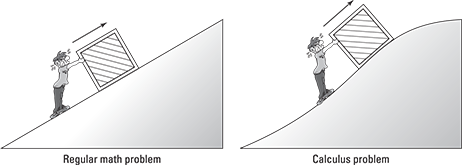
Figure 1-1: The difference between regular math and calculus: In a word, its the curve.
For the straight incline, the man pushes with an unchanging force, and the crate goes up the incline at an unchanging speed. With some simple physics formulas and regular math (including algebra and trig), you can compute how many calories of energy are required to push the crate up the incline. Note that the amount of energy expended each second remains the same.
For the curving incline, on the other hand, things are constantly changing. The steepness of the incline is changing and not just in increments like its one steepness for the first 3 feet then a different steepness for the next 3 feet. Its constantly changing. And the man pushes with a constantly changing force the steeper the incline, the harder the push. As a result, the amount of energy expended is also changing, not every second or every thousandth of a second, but constantly changing from one moment to the next. Thats what makes it a calculus problem. By this time, it should come as no surprise to you that calculus is described as the mathematics of change. Calculus takes the regular rules of math and applies them to fluid, evolving problems.

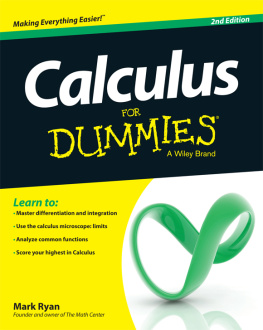

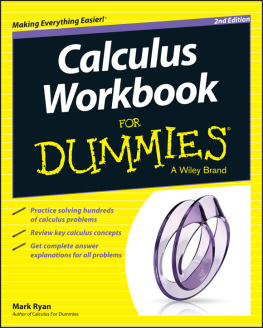

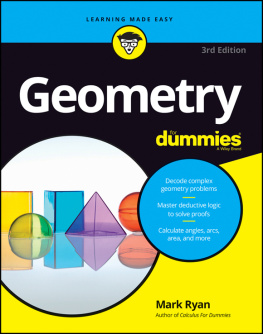
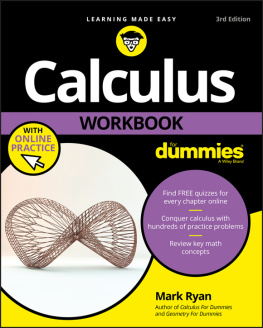

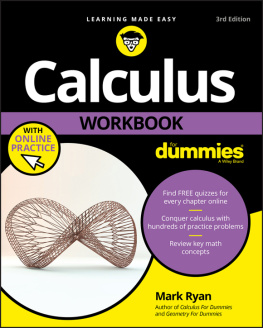


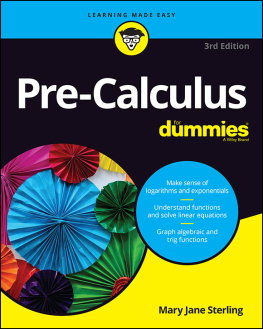

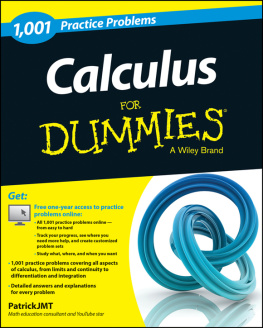

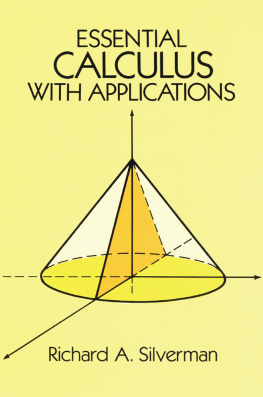
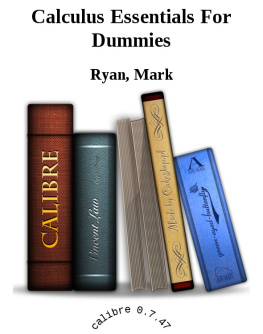

 Youre only in Chapter and youre already going to get your first calc test
Youre only in Chapter and youre already going to get your first calc test